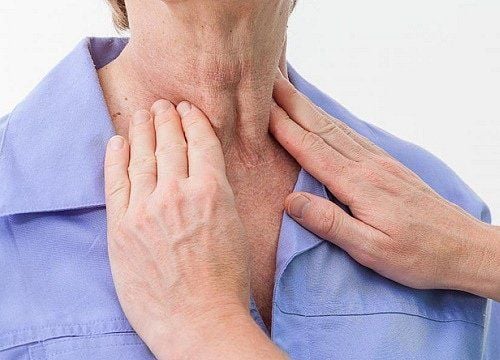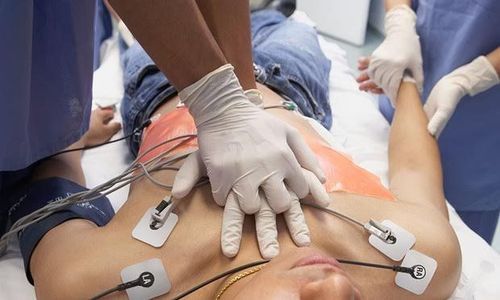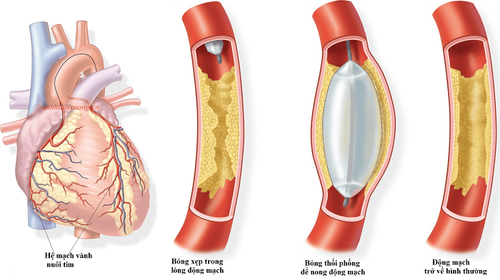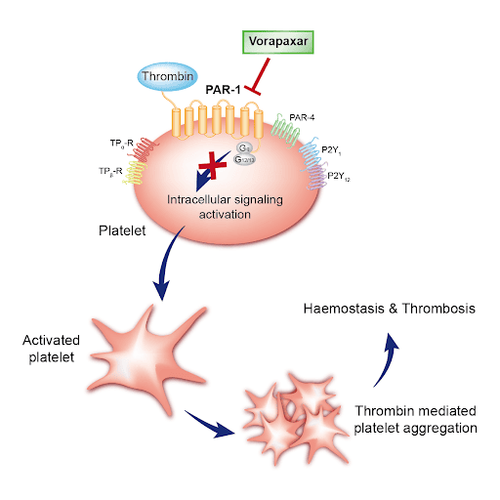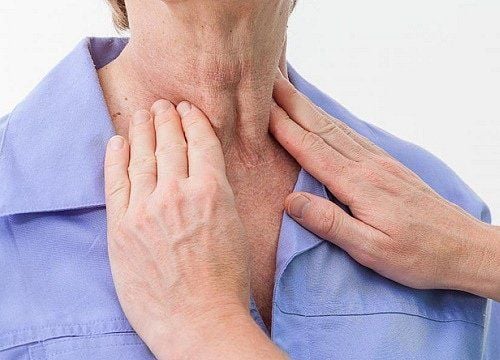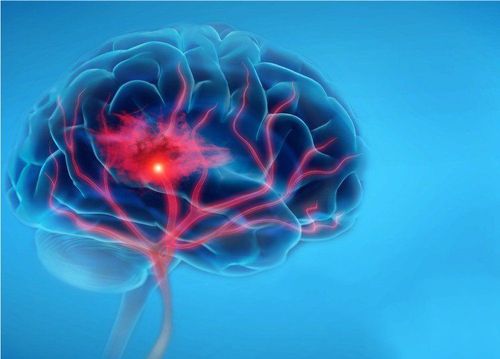This is an automatically translated article.
The article is expertly consulted by MSc Tran Duc Tuan - Resident Doctor of Radiology - Department of Diagnostic Imaging - Vinmec Central Park International General HospitalThe ideal time for stroke emergency is the first 3 - 6 hours from onset. Ignoring the golden stroke time, patients who are not recanalized large cerebral blood vessels are at risk of death or severe disability. Therefore, it is very important to know the early symptoms of a stroke.
1. The sooner the emergency, the higher the survival rate
According to statistics worldwide, stroke is the third leading cause of death but the leading cause of disability and reduced quality of life. Every year there are about 16 million strokes and about 6 million deaths globally. More than 80% of strokes occur in underdeveloped countries.In Vietnam, the rate of stroke patients has increased significantly in recent years. This disease requires a quick and accurate diagnosis, as well as the right and timely decisions of the doctor to save the patient's life, help restore health and reduce the risk of disability. It is important to seek emergency stroke care very soon after the first signs. Otherwise, the patient will quickly go into a coma, hemiplegia, or even death. However, knowledge about the golden age of stroke is generally not widely known.
Although with the advancement of medicine, the death rate from stroke has decreased, but the number of disability due to cerebrovascular accident tends to increase. The degree of sequelae also depends a lot on when and how the patient is detected, diagnosed and given emergency treatment. If a stroke patient is brought to a medical facility in the first 3 hours, then treated with specific fibrinolytic drugs, the chances of recovery are very good. However, experts say that only about 2-3% of people with acute cerebral ischemia receive medication at the right time of stroke in the first 3 hours.
Brain stroke often leaves extremely severe consequences. In addition to treatment costs, the patient also loses his ability to work, if the sequelae are severe, his family must have someone to take care of him, becoming a burden on society. But if you know how to prevent and treat a stroke properly, the consequences can be greatly reduced. In addition to early treatment with standard treatment regimens, patients must also prevent complications, exercise and restore function.
2. Why is stroke emergency often late?
According to experts, there are many reasons why patients often ignore the golden stroke time:
First, not everyone knows the golden stroke knowledge. In most cases, when having symptoms of a brain stroke, they often think that they have a cold, then shave the wind, self-medicate at home, and only go to the emergency room until it gets worse. For those who receive first aid for a stroke, it takes a long time to travel. When they arrive at the hospital, it may be the 3rd - 4th hour. Finally, it is due to the organization of stroke emergency care at some facilities. health facilities are often slow. There is a case where a patient has to stay in the emergency department for a few hours, wait for many doctors to come in for examination and diagnosis, and then have a brain angiogram... Just like that, the patient loses the chance to receive an emergency in 3 - The first 6 hours of golden stroke period .
3. First aid during a golden stroke
In general, cerebral stroke consists of 2 types:Cerebral infarction / cerebrovascular occlusion: accounted for about 80% Hemorrhagic / ruptured cerebral blood vessel: accounted for the remaining 20%. The golden stroke time is the best time to give emergency treatment to stroke patients with cerebral infarction, as follows:
3.1. Within 4.5 hours of taking blood thinners Patients who come during this time, if they meet all health conditions, will be given intravenous blood thinners. If the patient is diagnosed with intracranial major artery occlusion, rTPA can be administered, but then immediately transferred to the Thrombectomy Department to increase the probability of successful major revascularization.
3.2. Within 6 hours for thrombus intervention Patients arriving after 4.5 hours will no longer be indicated for intravenous thrombolysis, even if it is a small embolism. If large artery occlusion and within this time will be endovascular intervention to remove blood clot. The sooner and faster recanalization intervention, the better for the patient. After the 6-hour mark, the brain damage is more severe, the effectiveness is poor, and the complications after the intervention are high. Intervention after the golden stroke of 6 hours is just "fortunate" - finding more opportunities for patients to be late if the doctor sees that the brain cells that are deprived of blood supply have not died yet, there is still hope for recovery. 3.3. In cerebral hemorrhage or suspected cerebral hemorrhage Absolutely do not use thrombolytic drugs or drugs that increase the risk of bleeding. Treatment and results will depend on the cause and extent of the bleeding. In general, the principle of stroke emergency is still as soon as possible, including medication, surgery, hemostatic intervention...
4. Emergency model of stroke golden time

To take advantage of the emergency opportunity in the first 3 - 6 hours of the stroke golden period, people need to improve their knowledge about the early warning signs of a cerebrovascular accident. When the situation arises, take the patient to the emergency room safely and as soon as possible, do not self-medicate at home.
On the professional side, large hospitals need to have all relevant departments, set up a group of specialized doctors to give emergency brain stroke the fastest and most convenient place. The system of early diagnosis and treatment of acute ischemic stroke needs to ensure that when the patient arrives at the emergency room, all departments are ready to examine, consult and make quick decisions on treatment. minimize the time for patients to receive specific treatment soon.
Organization of stroke emergency takes place specifically as follows:
When receiving information about stroke patients, specialists in Brain Stroke Emergency, Imaging, Vascular Intervention and Neurosurgery The doctor will be there to immediately examine the emergency room and assess the condition. Then quickly bring the patient to the Radiology department (always ready to give priority to stroke patients). From the images taken, doctors will consult with stroke neurologists to make quick treatment decisions: One is to appoint intravenous thrombolysis; Or remove the thrombus with a mechanical device. After providing first aid for a stroke in the first 6 hours, the patient continues to be monitored and actively treated. If cerebral edema increases, the neurosurgeon will conduct decompression craniotomy according to the correct procedure. According to the guidelines of the American Stroke Association and the world, from the time the patient arrives at the emergency room to receiving specific treatment, it takes only 1 hour. If the rapid coordination between the Emergency Department (first admission) - Imaging - Vascular intervention - Neurosurgery - Follow-up resuscitation, the proportion of patients treated during sudden cardiac arrest stroke will increase, giving a much higher chance of survival.
Stroke does not exclude anyone, stroke patients need to be diagnosed and treated as quickly as possible according to the appropriate method. The stroke emergency room must be able to perform all diagnostic methods (such as CT, MRI, DSA) and treatment (intravenous rTPA, endovascular intervention to remove thrombus, hemostasis, craniotomy, decompression, etc.). ...) and the patient must arrive in about 2 hours to be in time for the stroke. In addition, people also need to have knowledge of stroke prevention, recognize and approach patients as quickly as possible, ensuring effective first aid or at least no further harm.
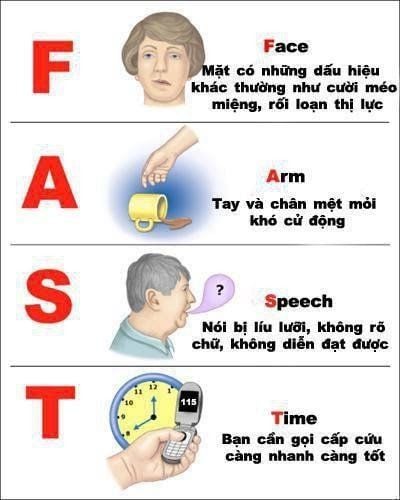
Vinmec Health System deploys a separate and professional welcome line for stroke patients when entering the emergency room, in which there are quick response procedures available from receiving and evaluating scales. score on the status of input and the route of tests, take necessary images to make decisions on the fastest and most suitable treatment direction for the patient, minimizing the waiting time with the criterion " Time is the brain” (Time is Brain). The team of doctors has high expertise in performing important techniques in the above treatment, including intravenous fibrinolysis, Interventional Electro-optics to remove intravascular thrombosis, ruptured aneurysms, vascular malformations, ... helped save many patients' lives from the risk of death as well as severe sequelae due to stroke.
To screen for stroke, the Vinmec system also provides screening services such as Doppler ultrasound of the carotid - vertebral arteries (which are the arteries that supply blood to the brain), brain MRI without magnetic contrast injection, with MRA TOF 3D pulse sequence, supplemented with Axial T2W and/or axial FLAIR pulse sequence for 7 minutes, helps to detect brain aneurysm, brain arteriovenous malformation, dural arteriovenous fistula, stenosis cerebral arteries and some abnormalities in the brain parenchyma. When there is an abnormality on the cerebral blood vessels, the doctor will have more specialized advice and instructions to accurately assess the shape and size of the abnormality, helping to make appropriate treatment indications.
Please dial HOTLINE for more information or register for an appointment HERE. Download MyVinmec app to make appointments faster and to manage your bookings easily.





